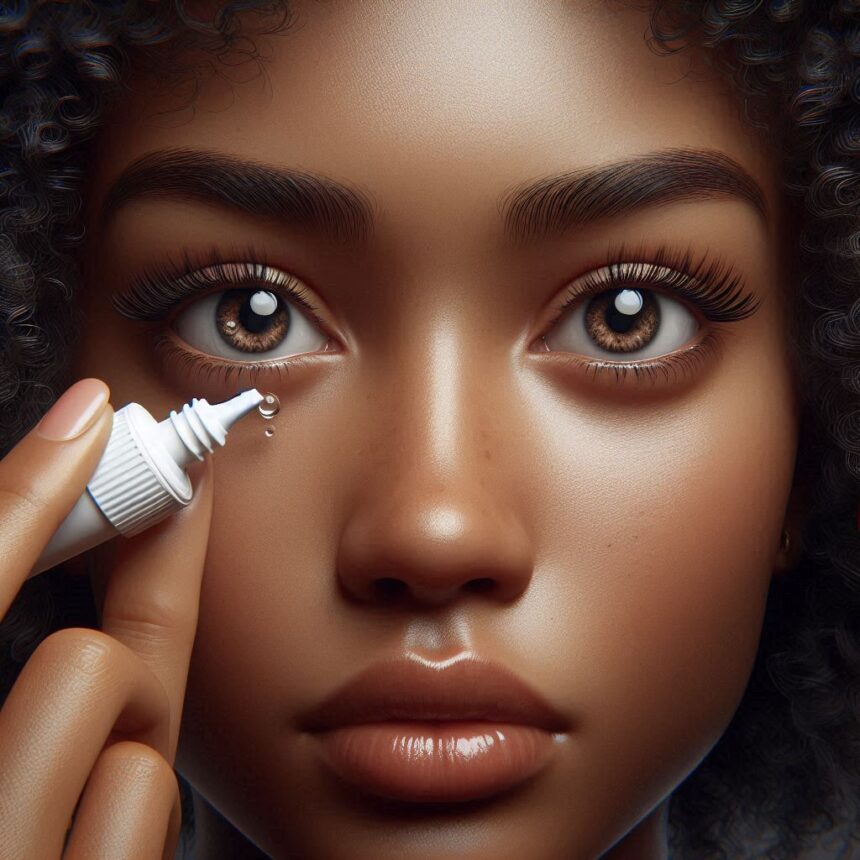The term “eye flu” is commonly used to describe conjunctivitis, an inflammation of the conjunctiva, the thin membrane lining your eyelids and covering the white part of your eye. While it may feel similar to the flu due to its discomfort, conjunctivitis isn’t caused by the influenza virus. This article will explore various strategies for treating eye flu, including at-home remedies and options for faster recovery.
Understanding the Enemy: Types of Conjunctivitis
Conjunctivitis can be caused by various factors, each requiring a slightly different approach to treatment. Here’s a breakdown of the main types:
- Viral Conjunctivitis: The most common culprit, often accompanying the common cold or allergies. It’s highly contagious and typically resolves within 1-2 weeks.
- Bacterial Conjunctivitis: Less frequent but more aggressive, often causing thicker discharge and crusting around the eyelashes. It requires antibiotic treatment prescribed by a doctor.
- Allergic Conjunctivitis: Triggered by allergens like pollen, dust mites, or pet dander. It causes itching, redness, and watering eyes. Antihistamine eye drops can provide relief.
- Giant Papillary Conjunctivitis: Primarily affects contact lens wearers due to chronic irritation from the lenses. Proper hygiene and switching to daily disposables can help.
How to Treat Eye Flu at Home

Many cases of eye flu, particularly viral conjunctivitis, can be managed effectively at home with these simple measures:
- Practice Good Hand Hygiene: Wash your hands frequently with soap and water to prevent spreading the infection to others or re-infecting yourself.
- Warm Compresses: Soak a clean washcloth in warm water, wring it out, and apply it gently to closed eyelids for 10-15 minutes. Repeat several times a day to soothe irritation and loosen discharge.
- Cool Compresses: For some, cool compresses may provide a more calming effect. Use a chilled eye mask or a washcloth soaked in cool water.
- Artificial Tears: Lubricating eye drops (artificial tears) can help alleviate dryness, burning, and itching. Use preservative-free brands if you have sensitive eyes.
- Avoid Eye Makeup and Contact Lenses: While recovering, ditch the mascara and eyeliner. These products can harbor bacteria and worsen irritation. If you wear contact lenses, switch to glasses until your eyes heal completely. Clean your lenses and case thoroughly according to your eye doctor’s instructions.
- Rest Your Eyes: Avoid straining your eyes by limiting screen time and taking breaks to close your eyes and relax.
How to Treat Eye Flu in One Day (Almost)
While a complete cure in a single day might not be realistic, here are some additional steps that can accelerate your recovery:
- Identify and Eliminate Triggers: If you suspect allergies are causing your eye flu, identify the allergen and try to avoid it. Consider taking over-the-counter allergy medications with your doctor’s approval.
- Pain Relief: Over-the-counter pain relievers like ibuprofen or acetaminophen can help manage discomfort associated with eye flu.
Dietary Boost for Eye Health
While there’s no magic food that cures eye flu, incorporating certain nutrients into your diet can support your immune system and promote faster healing. Here are some helpful dietary tips:
- Vitamin A: Essential for maintaining healthy eye tissues. Sources include carrots, sweet potatoes, spinach, and cantaloupe.
- Vitamin C: A powerful antioxidant that boosts the immune system. Citrus fruits, bell peppers, and broccoli are rich in Vitamin C.
- Omega-3 Fatty Acids: Found in fatty fish like salmon, tuna, and flaxseeds, these promote overall eye health and reduce inflammation.
- Zinc: Plays a role in immune function and wound healing. Include oysters, lean beef, and chickpeas in your diet.
When to See a Doctor
While most cases of eye flu resolve on their own within a week or two, there are situations where seeking medical attention is crucial:
- Severe Pain or Vision Changes: If you experience significant pain, blurry vision, or sensitivity to light, consult a doctor to rule out underlying conditions.
- Symptoms Worsening or Not Improving: If your symptoms worsen or persist after a week of home care, see a doctor to determine the cause and get proper treatment, especially if you suspect bacterial conjunctivitis.
- Discharge is Green or Yellow: Thick, greenish-yellow discharge is a sign of bacterial conjunctivitis, requiring antibiotic eye drops prescribed by a
10 Frequently Asked Questions on Eye Flu Remedies
Eye flu, also known as conjunctivitis, can be a real nuisance. It causes redness, irritation, and discomfort in the eyes. While most cases resolve on their own within a week or two, there are steps you can take to find relief and speed up recovery. Here are ten frequently asked questions about eye flu remedies, answered briefly:
1. What are the symptoms of eye flu?
- Redness in the white part of the eye
- Watery discharge
- Gritty sensation in the eye
- Itching and burning
- Increased sensitivity to light
- Swelling of the eyelids
2. Is eye flu contagious?
Yes, eye flu, particularly viral and bacterial conjunctivitis, is highly contagious. It can spread through contact with infected eyes or surfaces contaminated with the virus or bacteria.
3. How can I prevent the spread of eye flu?
- Wash your hands frequently with soap and water, especially after touching your eyes or caring for someone with eye flu.
- Avoid touching your eyes with unwashed hands.
- Dispose of tissues after use and don’t share them with others.
- Disinfect surfaces that may be contaminated with the virus or bacteria.
- Avoid close contact with people who have eye flu.
4. Can I wear makeup if I have eye flu?
No, it’s best to avoid wearing eye makeup while you have eye flu. Makeup products can harbor bacteria and worsen irritation.
5. Can I wear contact lenses if I have eye flu?
No, it’s advisable to switch to glasses while you recover from eye flu. Contact lenses can trap irritants and bacteria near your eye, further aggravating the condition.
6. Are there any home remedies for eye flu?
Several home remedies can help soothe the discomfort of eye flu. These include:
- Warm compresses: Soak a clean washcloth in warm water, wring it out, and apply it gently to closed eyelids for 10-15 minutes. Repeat several times a day.
- Cool compresses: For some, cool compresses may provide a more calming effect. Use a chilled eye mask or a washcloth soaked in cool water.
- Artificial tears: Lubricating eye drops (artificial tears) can help alleviate dryness, burning, and itching.
7. What can I eat to help heal from eye flu?
While there’s no specific cure, incorporating certain nutrients into your diet can support your immune system and promote faster healing. Here are some helpful dietary tips:
- Vitamin A: Essential for maintaining healthy eye tissues. Sources include carrots, sweet potatoes, spinach, and cantaloupe.
- Vitamin C: A powerful antioxidant that boosts the immune system. Citrus fruits, bell peppers, and broccoli are rich in Vitamin C.
8. How long does eye flu typically last?
Viral conjunctivitis usually resolves within 1-2 weeks. Bacterial conjunctivitis may take longer to clear up with proper antibiotic treatment. Allergic conjunctivitis can be chronic and require ongoing management.
9. When should I see a doctor for eye flu?
See a doctor if you experience:
- Severe pain or vision changes
- Symptoms worsening or not improving after a week of home care
- Discharge is green or yellow (signaling bacterial conjunctivitis)
- Sudden onset of eye pain, redness, and sensitivity to light (possible sign of a scratched cornea)
10. Can I take over-the-counter medications for eye flu?
Over-the-counter pain relievers like ibuprofen or acetaminophen can help manage discomfort associated with eye flu. However, avoid using any eye drops not prescribed by a doctor, as they may worsen irritation.
Remember, these are brief answers by Healnhealth.com. Always consult a doctor for proper diagnosis and treatment of eye flu.







Very interesting topic, thanks for posting.Blog monry